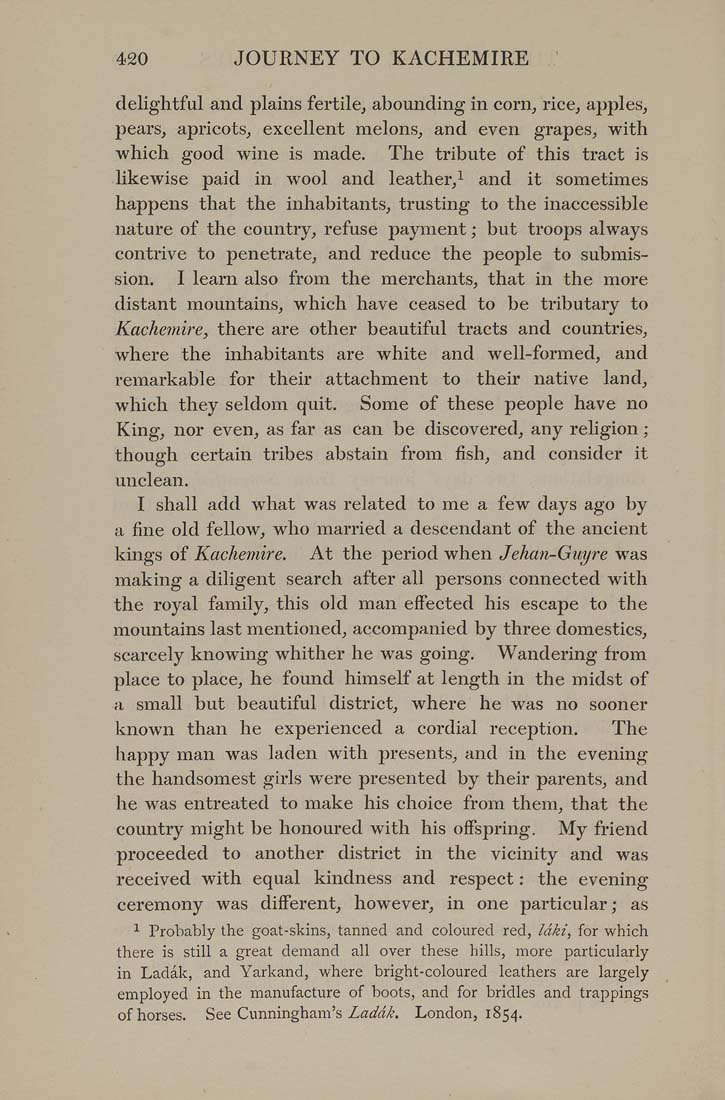420 JOURNEY TO KACHEMIRE
delightful and plains fertile, abounding in corn, rice, apples,
pears, apricots, excellent melons, and even grapes, with
which good wine is made. The tribute of this tract is
likewise paid in wool and leather,! and it sometimes
happens that the inhabitants, trusting to the inaccessible
nature of the country, refuse payment; but troops always
contrive to penetrate, and reduce the people to submis¬
sion. I learn also from the merchants, that in the more
distant mountains, which have ceased to be tributary to
Kachemire, there are other beautiful tracts and countries,
where the inhabitants are white and well-formed, and
remarkable for their attachment to their native land,
which they seldom quit. Some of these people have no
King, nor even, as far as can be discovered, any religion;
though certain tribes abstain from fish, and consider it
unclean.
I shall add what was related to me a few days ago by
a fine old fellow, who married a descendant of the ancient
kings of Kachemire. At the period when Jehan-Guyre was
making a diligent search after all persons connected with
the royal family, this old man eff'ected his escape to the
mountains last mentioned, accompanied by three domestics,
scarcely knowing whither he was going. Wandering from
place to place, he found himself at length in the midst of
a small but beautiful district, where he was no sooner
known than he experienced a cordial reception. The
happy man was laden with presents, and in the evening
the handsomest girls were presented by their parents, and
he was entreated to make his choice from them, that the
country might be honoured with his offspring. My friend
proceeded to another district in the vicinity and was
received with equal kindness and respect: the evening
ceremony was different, however, in one particular; as
^ Probably the goat-skins, tanned and coloured red, Idki, for which
there is still a great demand all over these hills, more particularly
in Ladak, and Yarkand, where bright-coloured leathers are largely
employed in the manufacture of boots, and for bridles and trappings
of horses. See Cunningham's Z«a'a/('. London, 1854.
|








